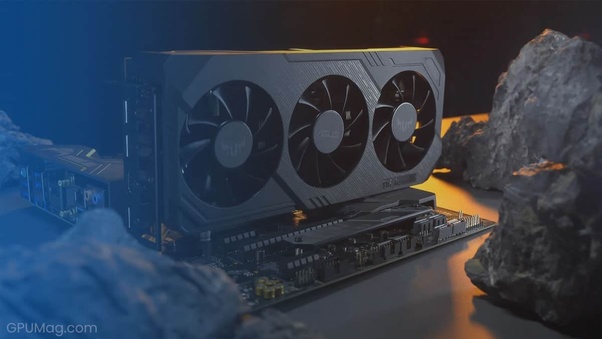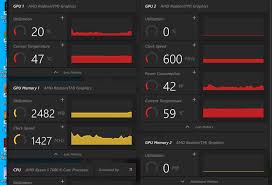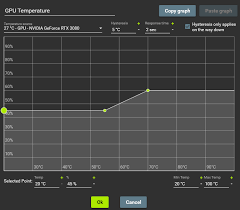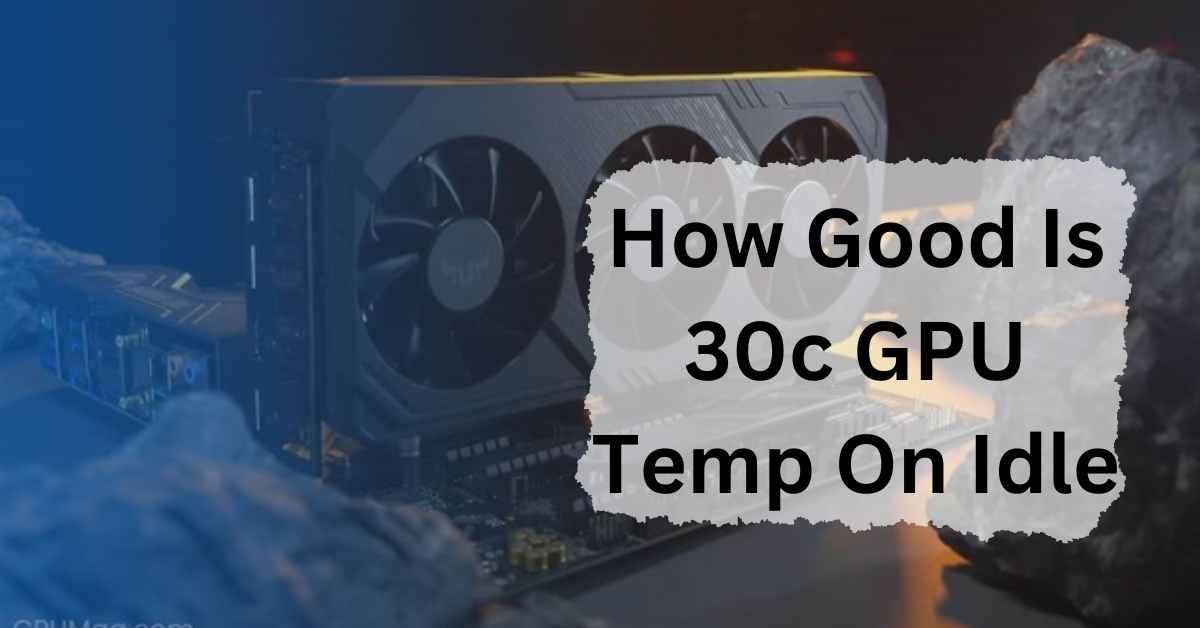If you’re into gaming or use graphics-intensive applications, keeping an eye on your GPU (Graphics Processing Unit) temperature is crucial. It ensures your system runs smoothly and avoids potential damage. But what about when your GPU is idle?
A 30°C (86°F) GPU temperature when idle is very good. It shows that your cooling system is working well. Keeping the GPU cool helps it perform better and last longer. This temperature is ideal for an idle state.
In this article, we will discuss “How Good Is 30c GPU Temp On Idle”.
Table of Contents
Understanding GPU Temperature:
What is GPU Temperature?
GPU temperature refers to the heat level generated by the graphics processing unit. It’s a critical factor in determining the performance and stability of your computer’s graphics card.
Why Does GPU Temperature Matter?

High temperatures can lead to thermal throttling, reducing the GPU’s performance. Prolonged exposure to high temperatures can also shorten the lifespan of the GPU.
Ideal GPU Temperature Range:
1. General Temperature Ranges for GPUs:
GPUs typically operate safely within a range of 30°C to 85°C. Idle temperatures (when the GPU is not under heavy load) usually fall between 30°C and 50°C.
2. Importance of Maintaining Optimal Temperatures:
Keeping your GPU within optimal temperature ranges ensures consistent performance and prevents damage over time.
Read: Is 74c Bad For GPU – A Complete Guide Of 2024!
What Does 30c GPU Temp on Idle Mean?
1. Explanation of Idle Temperature:
Idle temperature refers to the GPU’s heat level when it’s not actively processing demanding tasks, like gaming or rendering.
2. Comparison to Average Idle Temperatures:
A 30°C idle temperature is excellent, indicating efficient cooling and good airflow within your system. It’s at the lower end of the typical idle temperature range, suggesting your GPU is well-maintained.
Read: What Is A Reference GPU – A Complete Guide Of 2024!
Factors Influencing Idle GPU Temperature:
1. Ambient Room Temperature:
The room’s temperature can affect the GPU’s idle temperature. Cooler room temperatures generally lead to lower GPU temperatures.
2. Airflow and Cooling Solutions:
Proper case airflow and effective cooling solutions, like fans or liquid cooling, significantly impact the GPU’s temperature.
3. GPU Model and Architecture:
Different GPUs have varying thermal designs. High-end models often come with better cooling mechanisms, affecting their idle temperatures.
Read: How Long Does GPU Last – A Comprehensive Guide Of 2024!
Benefits of a Low Idle GPU Temperature:

1. Increased Longevity of the GPU:
Lower temperatures reduce wear and tear on the GPU, potentially extending its lifespan.
2. Improved Performance Stability:
Maintaining lower temperatures can prevent performance drops due to thermal throttling.
3. Lower Energy Consumption:
Cooler GPUs can operate more efficiently, using less power and reducing overall energy consumption.
Read: Do GPU Brands Matter – A Comprehensive Guide Of 2024!
How to Achieve a 30c Idle GPU Temperature?
1. Optimal Cooling Solutions:
Using high-quality fans or liquid cooling systems can help maintain low temperatures.
2. Proper Case Airflow Management:
Ensure that your case has good airflow by arranging fans strategically and avoiding obstructions.
3. Regular Maintenance and Cleaning:
Dust and debris can hinder airflow. Regularly clean your GPU and case to maintain optimal cooling.
Read: Are GPU Fans Supposed To Spin All The Time – A Ultimate Guide Of 2024!
What’s a Good Idle Temperature for a GPU?
A good idle temperature for a GPU is between 30°C to 40°C (86°F to 104°F). This range shows that your cooling system is working well. Keeping the GPU cool when idle helps ensure good performance and a longer lifespan.
What Causes High GPU Temperatures?
- Poor cooling
- Dust buildup
- High graphics settings
- Insufficient airflow
- Overclocking
Ensure good ventilation, clean the GPU and fans regularly, and check the cooling system to keep temperatures down.
How to lower your GPU temperature?
- Clean dust from the GPU and fans
- Improve airflow in your PC case
- Reapply thermal paste
- Increase fan speed
- Use additional cooling, like extra fans or a liquid cooling system
- Avoid overclocking
- Ensure the room is cool and well-ventilated
Is too cold bad for a GPU?
Too-cold temperatures are generally not bad for a GPU. However, if the GPU gets very cold quickly, it might cause condensation, which can damage it.
Ensure that the GPU does not go below the manufacturer’s recommended operating temperatures to avoid any issues.
Is 30C idle GPU temperature good?
Yes, a 30°C (86°F) idle GPU temperature is good. It shows that your cooling system is effective. Keeping the GPU at this temperature when idle helps ensure better performance and a longer lifespan.
Is 30 a good CPU idle temp?
Yes, a 30°C (86°F) idle CPU temperature is good. It indicates that your cooling system is working well. Maintaining this temperature at idle helps ensure your CPU performs efficiently and lasts longer.
Read: What Is Normal GPU Usage While Gaming – Guide Of 2024!
Is It Good For GPU Lifespan To Run 32-30c In Idle Temps?
Yes, running a GPU at 30-32°C (86-90°F) in idle temperatures is good for its lifespan. These low temperatures indicate effective cooling, which helps maintain performance and extends the GPU’s life. Keeping the GPU cool is beneficial for its long-term health.
Is 30°C good for GPU?
Yes, 30°C is excellent for a GPU. This is a low and safe temperature, typically seen when the GPU is idle or not under heavy load. It indicates proper cooling.
Normal idle GPU temp laptop?
A normal idle GPU temperature for a laptop is between 30°C to 50°C. Laptops may run slightly warmer due to compact designs, but staying below 50°C is generally safe.
Is 30 degrees idle good GPU?
Yes, 30°C at idle is very good for a GPU. It shows that the cooling system is working well, and the GPU is not overheating when not in use.
Is 30C a good idle temperature?
Yes, 30°C is an excellent idle temperature for a GPU. It indicates the GPU is cool and well-maintained when not under stress or performing heavy tasks.
Is 30 Celsius good for a GPU?
Yes, 30°C is a very safe and good temperature for a GPU. It’s common during idle or light usage, showing the system has efficient cooling.
What is ideal idle GPU temp?
The ideal idle GPU temperature is 30°C to 40°C. This range is safe and normal for most GPUs. Temperatures above 50°C at idle might indicate a cooling issue.
Is 30% GPU usage normal idle?
No, 30% GPU usage at idle is slightly high. Most GPUs should use 0% to 5% at idle. Background apps or processes may cause this, so check for unnecessary tasks.
What is the average idle temp for a GPU?
The average idle temperature for a GPU is 30°C to 40°C. If it’s consistently higher, check cooling systems or background tasks using GPU resources.
Is 38c temp hot for an idle GPU?
No, a 38°C (100°F) temperature is not hot for an idle GPU. This temperature is within the normal range and indicates that your cooling system is working well. Keeping your GPU at this temperature when idle helps ensure good performance and a longer lifespan.
Read: How To Control GPU Fan Speed – Optimize GPU Fan Speed!
Is 40 degrees GPU idle good?
Yes, a 40°C (104°F) idle GPU temperature is good. It indicates that your cooling system is working effectively. Maintaining this temperature when the GPU is idle helps ensure good performance and extends the GPU’s lifespan.

GPU idle temp 40?
A 40°C (104°F) idle temperature for a GPU is normal and good. It shows that your cooling system is working well. Keeping the GPU at this temperature when idle helps with performance and longevity.
Is 50C good for GPU idle?
A 50°C (122°F) idle temperature for a GPU is higher than usual but still acceptable. Ideally, idle temperatures should be lower, around 30-40°C (86-104°F). If your GPU is at 50°C, check for dust or improve airflow to keep it cooler.
Is 50c good for GPU while gaming?
Yes, 50°C is a good temperature for a GPU while gaming. It means your GPU is staying cool and working well. Most GPUs are safe up to 80°C or higher, so 50°C is excellent and helps ensure long-lasting performance.
Is 50°C a bad temperature for a GPU when idle?
Yes, 50°C is a bit high for a GPU when idle. Usually, an idle GPU should be around 30-40°C. If it’s 50°C, check for dust in the fans, good airflow in the case, or background programs using the GPU.
GPU idle temp 60?
A GPU idle temperature of 60°C is high. Normal idle temperatures are around 30-40°C. High idle temperatures can be caused by poor airflow, dust, or background programs using the GPU. Check your system’s cooling and clean any dust to help lower the temperature.
What is a safe GPU temperature?
A safe GPU temperature while gaming is typically below 85°C. Most GPUs can handle up to 90°C, but it’s better to stay under 85°C for good performance and long life. At idle, a safe temperature is around 30-40°C.
What should 3080 GPU idle temps be?
A 3080 GPU’s idle temperature should be between 30-40°C. If the temperature is higher, check for dust in the fans, ensure good airflow in the case, or see if any background programs are using the GPU.
Good idle temps for CPU and GPU?
Good idle temperatures for a CPU are around 30-40°C, and for a GPU, they are also around 30-40°C. These temperatures indicate that your cooling system is working well and there are no issues with airflow or dust buildup.
What are your CPU/GPU temps like?
My CPU temperatures are around 30-40°C when idle and 60-70°C when under load. My GPU temperatures are around 30-40°C when idle and 70-80°C when gaming or working hard. These temperatures show that my cooling system is effective.
Is 26c for CPU and 30c for GPU good while gaming?
Yes, 26°C for the CPU and 30°C for the GPU while gaming are excellent temperatures. These low temperatures indicate that your cooling system is very effective, keeping your hardware in great condition and ensuring optimal performance.
Should I get a good GPU or CPU for my gaming pc?
For a gaming PC, a good GPU is usually more important than a good CPU. The GPU handles most of the graphics work in games, so a strong GPU will improve your gaming experience. However, having a decent CPU is still important for overall performance.
When idle, my CPU is at 41C and while gaming it is at 65C. Is this okay?
Yes, 41°C when idle and 65°C while gaming are good temperatures for your CPU. These values show that your cooling system is working well, keeping your CPU within safe and efficient operating ranges.
When to Worry About GPU Temperature:

1. Thresholds for Concern:
Temperatures consistently above 85°C may indicate a cooling problem.
2. Action Steps if Temperatures Are Too High:
Check for dust buildup, improve case airflow, and consider upgrading your cooling solution.
FAQs:
1. What is the ideal idle temperature for a GPU?
The ideal idle temperature typically ranges between 30°C and 50°C.
2. Can a GPU be too cold?
Yes, extremely low temperatures can cause condensation, potentially damaging the GPU.
3. How often should I clean my GPU to maintain low temperatures?
It’s advisable to clean your GPU and system every few months to prevent dust buildup.
4. What are the best tools for monitoring GPU temperature?
Popular tools include MSI Afterburner, HWMonitor, and GPU-Z.
5. How does room temperature affect GPU idle temperature?
Warmer room temperatures can lead to higher GPU idle temperatures, while cooler rooms help keep the GPU cooler.
6. What is the ideal GPU temperature while gaming?
The ideal temperature while gaming is typically between 60°C and 80°C, depending on the GPU model and cooling system.
7. Can low idle temperatures harm my GPU?
Generally, low idle temperatures are not harmful and can be beneficial. However, extremely low temperatures could cause condensation in very high humidity conditions.
8. How often should I clean my GPU cooling system?
It’s good practice to clean your cooling system every 3 to 6 months, depending on your environment.
9. What software is best for monitoring GPU temperature?
MSI Afterburner, HWMonitor, and GPU-Z are excellent choices for monitoring your GPU temperature.
Conclusion:
In conclusion, a 30°C (86°F) idle GPU temperature is excellent and indicates effective cooling. Maintaining this temperature helps your GPU perform well and last longer. If your GPU runs cooler than this, it’s a good sign of efficient cooling, while slightly higher temperatures are still acceptable. Regular maintenance and proper airflow are key to keeping your GPU in great shape.

I’m Noah Lucas, the voice behind the content you find here. With 5 years of experience in the GPU field, my goal is to provide clear and helpful information to everyone interested in this technology.
Whether you’re new to GPUs or looking to deepen your understanding, my articles aim to break down complex topics into simple, easy-to-understand language. This way, no matter where you’re from, you can find the information you need without any confusion.

